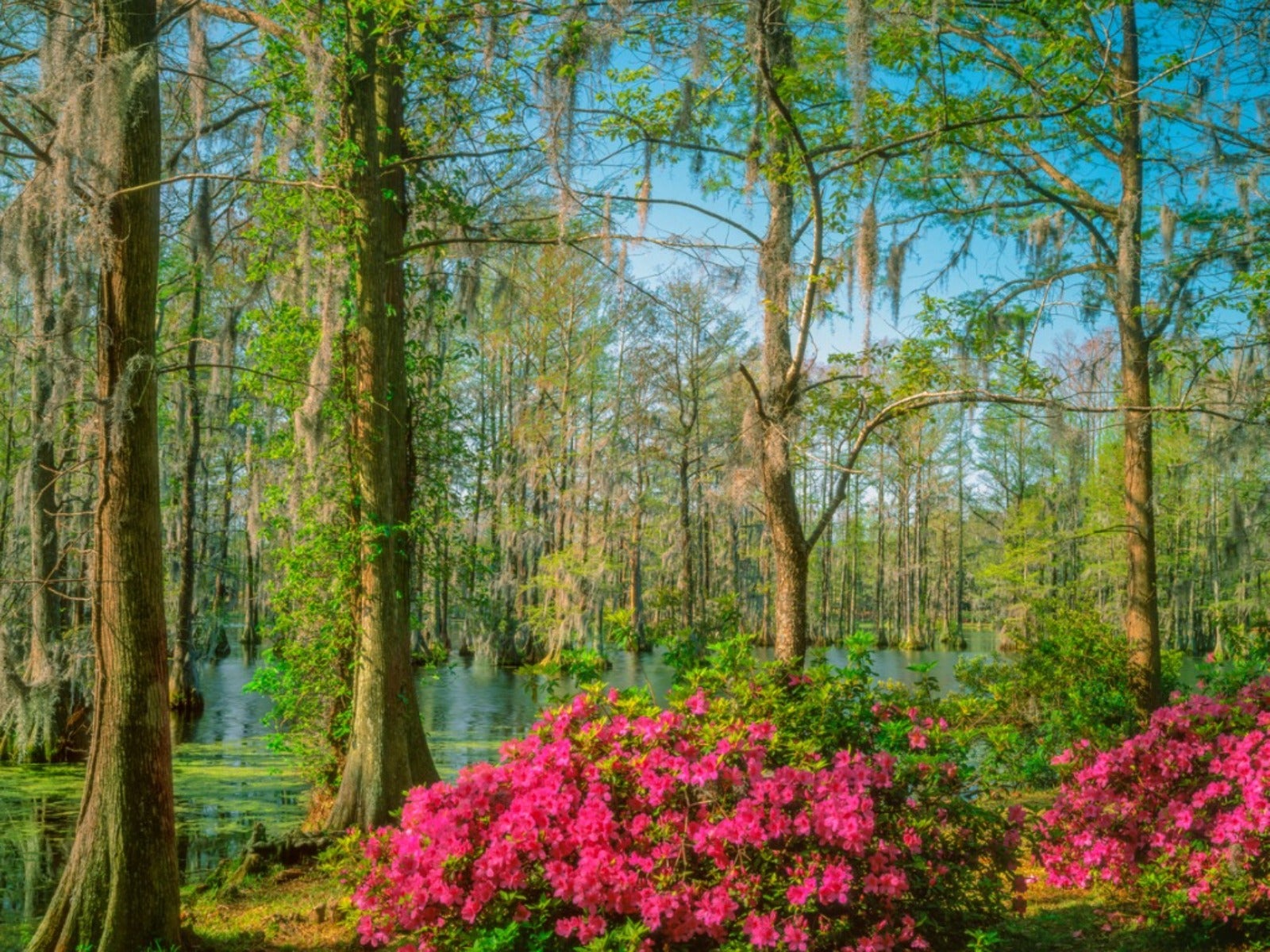Best Southeast Native Plants, Trees, And Shrubs To Grow


The southeastern United States is primarily a humid, sub-tropical region. As such, it is filled with a wide variety of native flora. The area is home to the Carolinas, Virginias, Alabama, Kentucky, Florida, Tennessee, Georgia, Alabama, and other eastern coastal states. While many imported species are suitable for gardening in this area, natives are an excellent choice due to their adaptability to the region. Selecting natives also reduces the chances of invasive species colonizing the wild. Native trees of the southeast also provide important food and habitat for wild animals and birds, while native southeast wildflowers attract local pollinators.
Using native plants and wildflowers in the garden is a sure fire way of achieving a low maintenance landscape that is used to the existing soil, light, water, and other conditions. Georgia native plants will tolerate the sandy to red clay soils of the region, while plants native to Florida are well suited to the mostly sandy and commonly salinated soils. Most of these states contain extreme diversity of habitat from salty marshes, coastal dunes, and mountain ranges to highland meadows and deep forests. Reputable nurseries and greenhouses can guide the gardener to the correct plants for their site. Using local extension offices is also an excellent way to determine which native plants will thrive in the garden.
Considerations for Native Plants
Before designing the landscape it is important to come up with a plan. Watch the light play over the course of a week or more to determine how many hours of daylight the areas will greet. Perform soil tests to determine the pH, soil type, drainage, and nutrient concentration. Then contemplate the size of plant required and ensure there is enough space for plants such as tall trees, climbing vines, or spreading groundcovers. If necessary, amend the site with added compost, or lime and sulfur to change pH. Many of the Virginia native plants are indigenous across the southeast, but not all plants will enjoy the same growing condition found in a particular site.
Southeast Native Wildflowers
There are both herbaceous and woody wildflowers found wild across these states. The azalea is common in many forests, while orange coneflower is a part of its meadowlands. The diversity of terrain makes the southeast rich in flowering plants, as does its climate and growing season. Seek blooming plants that will develop flowers throughout the growing season. Fall, spring, and summer bloomers will provide food for animals, birds, and beneficial insects.
Southeast Flowers
- Rose - pink
- Pink Lady’s Slipper
- Goldenrod
- Wild Flag
- Butterfly Weed
- Ironweed
- Scarlet Hibiscus
- Glade Violet
- Common Yarrow
- White Snakeroot
- Eastern Red Columbine
- Tickseed
- Trumpet Vine
- Swamp Mallow
- Foamflower
- Joe Pye Weed
- Indian Blanket
- Swamp Sunflower
- Blazing Star
- Wild Lupine
- Greek Valerian
Native Trees of the Southeast
Trees form a canopy that can provide cooler temperatures below. The most effective installations of trees should provide a layered structure with taller plantings graduating to smaller species. Such an effect is most attractive to native fauna and insects, and is the way they naturally grow in the wild. The temperate forest communities of the region contain the canopy, understory, shrub, herbaceous, and ground levels. Mimicking this planting structure supports the greatest number of wildlife and creates ideal habitat for each plant level.
Southeastern trees for consideration:
Bald Cypress
Florida Maple
Sign up for the Gardening Know How newsletter today and receive a free copy of our e-book "How to Grow Delicious Tomatoes".
Willow Oak
Alabama Cherry
Flowering Dogwood
Longleaf Pine
Cane Ash
American Beech
Loblolly Pine
Gumbo Limbo Tree
Red Buckeye
Southern Magnolia
Tulip Poplar
Swamp Chestnut Oak
Sweetgum
Cucumber Tree
Tupelo
Wax Myrtle
River Birch
Sourwood
American Sycamore
Fragrant Sumac
Woody understory species:
Downy Serviceberry
New Jersey Tea Redroot
Buttonbush
Carolina Silverbell
American Holly
White Fringetree
Witch Hazel
Smooth Hydrangea
St. John’s Wort
Mountain Laurel
Spicebush
Flame Azalea

Bonnie Grant is a professional landscaper with a Certification in Urban Gardening. She has been gardening and writing for 15 years. A former professional chef, she has a passion for edible landscaping.